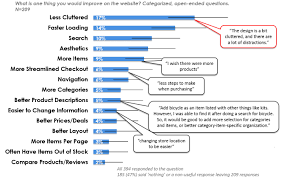Sustainable Software Development: Building for a Greener Future
In today’s digital age, sustainability is not limited to just physical resources and energy consumption. It also extends to the realm of software development. Sustainable software development focuses on creating applications and systems that minimize their environmental impact while maximizing their long-term value.
The concept of sustainable software development encompasses several key principles. First and foremost is energy efficiency. Developers are encouraged to optimize their code and design practices to ensure that software operates efficiently, consuming minimal resources such as CPU cycles and memory. By reducing energy consumption, we can significantly decrease the carbon footprint associated with running software applications.
Another crucial aspect of sustainable software development is longevity. Traditional software often becomes obsolete after a few years, leading to wastefulness as new versions are released, requiring users to upgrade or discard old systems. Sustainable software development promotes building applications that have a longer lifespan, ensuring compatibility with future technologies and reducing the need for frequent updates or replacements.
Furthermore, sustainable software development emphasizes the use of open-source technologies whenever possible. Open-source solutions allow developers to leverage existing codebases rather than reinventing the wheel, reducing duplication of efforts and promoting collaboration within the developer community. By sharing knowledge and resources openly, we can collectively work towards more sustainable solutions.
Adopting agile methodologies also plays a significant role in sustainable software development. Agile practices encourage iterative development, allowing for continuous improvement based on user feedback. This approach minimizes waste by focusing only on essential features and avoiding unnecessary functionalities that may burden system resources or contribute to bloatware.
Additionally, sustainable software development promotes ethical considerations throughout the entire lifecycle of an application. This includes ensuring data privacy and security measures are in place to protect user information from unauthorized access or misuse. By prioritizing ethical practices, we can build trust with users while also minimizing potential harm caused by poorly designed or insecure software.
To achieve sustainable software development, collaboration between developers and other stakeholders is crucial. It requires a collective effort to prioritize sustainability in software design, development, and deployment. Companies and organizations can play a vital role by setting sustainability goals for their software projects and fostering a culture that values environmentally conscious practices.
In conclusion, sustainable software development is an essential aspect of building a greener future. By focusing on energy efficiency, longevity, open-source collaboration, agile methodologies, and ethical considerations, we can create software applications that not only meet our current needs but also minimize their environmental impact and contribute to a more sustainable world. Let us embrace the principles of sustainable software development and work together towards a brighter and greener digital future.
5 Essential Tips for Sustainable Software Development
- Use Automated Testing
- Leverage Open Source Components
- Design for Scalability
- Implement Continuous Delivery
- Monitor Performance Metrics
Use Automated Testing
Sustainable Software Development Tip: Embrace Automated Testing
In the realm of sustainable software development, one valuable practice that stands out is the use of automated testing. Automated testing refers to the process of running tests on software code automatically, without requiring manual intervention. This approach offers numerous benefits that contribute to both the efficiency and sustainability of software development processes.
First and foremost, automated testing helps ensure the reliability and quality of software applications. By automating test cases, developers can quickly identify bugs, errors, or regressions in their code. This not only reduces the likelihood of releasing faulty software but also minimizes the need for extensive manual testing, which can be time-consuming and prone to human error.
Moreover, automated testing promotes efficiency throughout the entire development cycle. With automated tests in place, developers can run them repeatedly whenever changes are made to the codebase. This constant feedback loop allows for early detection of issues, enabling swift resolution before they escalate into more significant problems. As a result, development teams can save time and resources by catching bugs early on and avoiding costly rework or delays.
From a sustainability standpoint, automated testing also contributes to reducing waste. Traditional manual testing often involves repetitive tasks that consume significant human effort and time. By automating these tests, developers can free up valuable resources to focus on more complex and creative aspects of software development. Additionally, automation eliminates paper-based test documentation and reduces overall paper usage in the development process.
Furthermore, automated testing facilitates continuous integration and delivery practices. With an extensive suite of automated tests in place, developers can confidently make changes to their codebase knowing that any potential issues will be promptly identified through automated test runs. This allows for more frequent updates and releases while maintaining high-quality standards—ultimately leading to faster deployment cycles and improved user satisfaction.
It’s worth noting that implementing automated testing requires upfront investment in setting up a robust test infrastructure and developing comprehensive test suites. However, this investment pays off in the long run as it streamlines the development process and reduces the overall cost of software maintenance. The time and effort saved by automated testing can be redirected towards innovation and enhancing the user experience.
In conclusion, embracing automated testing is a valuable tip for sustainable software development. By automating tests, developers can ensure reliable software quality, enhance efficiency, reduce waste, and enable continuous integration and delivery practices. As we strive for more sustainable software development practices, incorporating automated testing into our workflows is a step in the right direction, benefiting both developers and end-users alike.
Leverage Open Source Components
Leverage Open Source Components: A Key to Sustainable Software Development
In the world of software development, one tip that stands out for achieving sustainable practices is leveraging open source components. Open source software refers to applications or libraries that are freely available for use, modification, and distribution by anyone. By incorporating these components into your projects, you not only harness the power of collaborative development but also contribute to a more sustainable software ecosystem.
One of the primary benefits of using open source components is the ability to avoid reinventing the wheel. Developers can tap into a vast array of pre-existing codebases and libraries that have been developed and refined by a global community of contributors. This allows for faster development cycles and reduces the need for creating code from scratch, ultimately saving time and resources.
By leveraging open source components, developers can build upon a foundation of well-tested and widely-used software. These components often undergo continuous improvement through community-driven contributions, bug fixes, and security updates. This collaborative effort ensures that the software remains robust and reliable over time.
Moreover, open source components promote transparency and accountability. The availability of source code allows developers to inspect how these components work internally, ensuring there are no hidden vulnerabilities or malicious functionalities. This transparency builds trust among users and fosters a culture of security-conscious development.
From a sustainability perspective, utilizing open source components aligns with the principles of reducing waste and avoiding duplication. Instead of starting from scratch with every project, developers can leverage existing solutions that have been thoroughly vetted by the community. This approach minimizes resource consumption while still allowing customization to meet specific project requirements.
Open source also encourages knowledge sharing and collaboration within the developer community. By contributing back to open source projects or sharing improvements made on top of existing components, developers help create a virtuous cycle where everyone benefits from collective expertise. This collaboration not only enhances the quality of software but also promotes sustainable practices through shared resources.
When it comes to sustainable software development, leveraging open source components is a win-win situation. It empowers developers to work efficiently, create more reliable applications, and reduce unnecessary duplication. By embracing open source, we contribute to a sustainable software ecosystem that fosters collaboration, transparency, and continuous improvement. So let’s tap into the power of open source and build a more sustainable future for software development.
Design for Scalability
Design for Scalability: A Key Tip for Sustainable Software Development
In the realm of sustainable software development, one crucial tip that developers should keep in mind is to design for scalability. Scalability refers to the ability of a software application or system to handle increased workloads and growing demands over time. By incorporating scalability into the design process, developers can create software that remains efficient and sustainable as it grows.
When designing for scalability, developers need to consider the potential future needs of the application. This involves anticipating increased user traffic, expanding data storage requirements, and accommodating additional features or functionalities. By taking these factors into account from the start, developers can avoid costly and time-consuming rework in the future.
One key aspect of designing for scalability is building a flexible architecture. This includes using modular designs, separating components or services, and adopting microservices or containerization approaches. These practices allow for easier scaling by enabling individual components to be adjusted or replaced without affecting the entire system. With a flexible architecture in place, developers can seamlessly add resources or adjust configurations as needed without disrupting operations.
Another important consideration is optimizing database design and storage mechanisms. As data volumes increase over time, inefficient database structures can lead to performance bottlenecks and increased resource consumption. By employing techniques such as indexing, partitioning, and caching strategies, developers can ensure that data retrieval remains efficient even with growing datasets.
Furthermore, designing for scalability involves implementing effective load balancing techniques. Load balancing distributes incoming requests across multiple servers or instances to prevent any single component from becoming overwhelmed. This not only ensures optimal performance but also allows for easy scaling by adding more servers when necessary.
By designing software applications with scalability in mind, developers can achieve several sustainability benefits. Firstly, scalable systems are more resource-efficient as they can handle increased workloads without requiring additional hardware resources immediately. This reduces energy consumption and minimizes unnecessary hardware waste.
Additionally, designing for scalability promotes longevity by future-proofing software applications. Scalable systems can adapt to changing user needs and accommodate growth, eliminating the need for frequent system overhauls or replacements. This reduces electronic waste and extends the lifespan of software applications.
In conclusion, designing for scalability is a valuable tip for sustainable software development. By considering future needs, building flexible architectures, optimizing database design, and implementing load balancing techniques, developers can create software that remains efficient and sustainable as it scales. Embracing scalability not only reduces resource consumption but also promotes longevity and minimizes electronic waste. Let us prioritize scalability in our software design practices to build a more sustainable digital future.
Implement Continuous Delivery
Implement Continuous Delivery: A Key Step towards Sustainable Software Development
In the ever-evolving world of software development, finding ways to build sustainable applications is crucial. One powerful technique that can contribute significantly to sustainable software development is implementing Continuous Delivery.
Continuous Delivery is a software development practice that emphasizes frequent and automated releases of software updates. By automating the process of building, testing, and deploying software changes, developers can ensure a smooth and efficient release cycle. This approach not only speeds up the delivery of new features but also minimizes the risk of errors and reduces waste in the development process.
When it comes to sustainability, Continuous Delivery offers several advantages. First and foremost, it enables developers to quickly respond to changing requirements or bug fixes. By releasing smaller, incremental updates instead of large monolithic releases, developers can address issues promptly without disrupting the entire system. This agility reduces downtime and improves user experience while minimizing resource consumption.
Continuous Delivery also promotes collaboration and transparency within development teams. By automating the build and deployment process, everyone involved in the project has visibility into changes as they occur. This fosters a culture of shared responsibility, where developers can work together to identify potential bottlenecks or inefficiencies in the codebase. Through regular feedback loops and continuous improvement, teams can optimize their workflows and reduce waste in terms of time and resources.
Furthermore, Continuous Delivery encourages rigorous testing practices. Automated testing ensures that each change introduced into the codebase undergoes thorough examination before being deployed. This helps identify bugs early on, preventing them from causing larger issues down the line. By catching bugs early through automated testing, developers save time and resources that would otherwise be spent on fixing more complex problems later.
From an environmental standpoint, Continuous Delivery contributes to sustainability by reducing waste associated with manual processes. Automating tasks such as building, testing, and deployment eliminates human errors while optimizing resource utilization. It minimizes unnecessary rework caused by manual mistakes or misconfigurations, ultimately reducing energy consumption and carbon emissions.
Implementing Continuous Delivery requires a combination of technical expertise and cultural change within development teams. It involves setting up automated pipelines, establishing robust testing frameworks, and embracing a mindset of continuous improvement. While the initial investment may be significant, the long-term benefits in terms of sustainability, efficiency, and user satisfaction make it well worth the effort.
In conclusion, implementing Continuous Delivery is a key step towards achieving sustainable software development. By automating release processes, promoting collaboration and transparency, enabling rigorous testing practices, and reducing waste associated with manual processes, developers can build more sustainable applications. Let us embrace Continuous Delivery as a powerful tool to create software that is not only innovative but also environmentally conscious.
Monitor Performance Metrics
One key tip for sustainable software development is to monitor performance metrics throughout the development process. Keeping a close eye on performance metrics allows developers to identify areas of improvement, optimize resource usage, and reduce energy consumption.
Performance metrics provide valuable insights into how efficiently a software application is running. By monitoring metrics such as CPU usage, memory utilization, and response times, developers can pinpoint bottlenecks or areas where the software may be consuming excessive resources. This information enables them to make targeted optimizations that not only enhance the user experience but also reduce the environmental impact of the application.
Monitoring performance metrics also helps in identifying potential scalability issues. As applications grow in size and complexity, they may require more resources to function optimally. By tracking performance metrics, developers can anticipate and address scalability challenges before they become critical. This proactive approach ensures that software applications can handle increased user loads without unnecessary resource consumption.
In addition to optimizing resource usage, monitoring performance metrics aids in identifying energy-intensive processes within an application. Developers can analyze these processes and explore ways to minimize their energy consumption without compromising functionality or user experience. This focus on energy efficiency aligns with sustainable software development principles by reducing power consumption and minimizing associated carbon emissions.
Furthermore, continuous monitoring of performance metrics allows developers to track the impact of any changes or updates made to the software over time. By comparing before-and-after data, they can assess the effectiveness of optimizations and improvements implemented during the development cycle. This iterative approach ensures that sustainable practices are integrated into ongoing software development efforts.
Overall, monitoring performance metrics is a vital practice for sustainable software development. It empowers developers with valuable insights into resource usage, scalability challenges, energy-intensive processes, and the overall efficiency of their applications. By leveraging this information throughout the development process, developers can create software that not only meets user needs but also minimizes its environmental impact. Let us embrace this tip and contribute towards building a more sustainable digital future through responsible software development.



